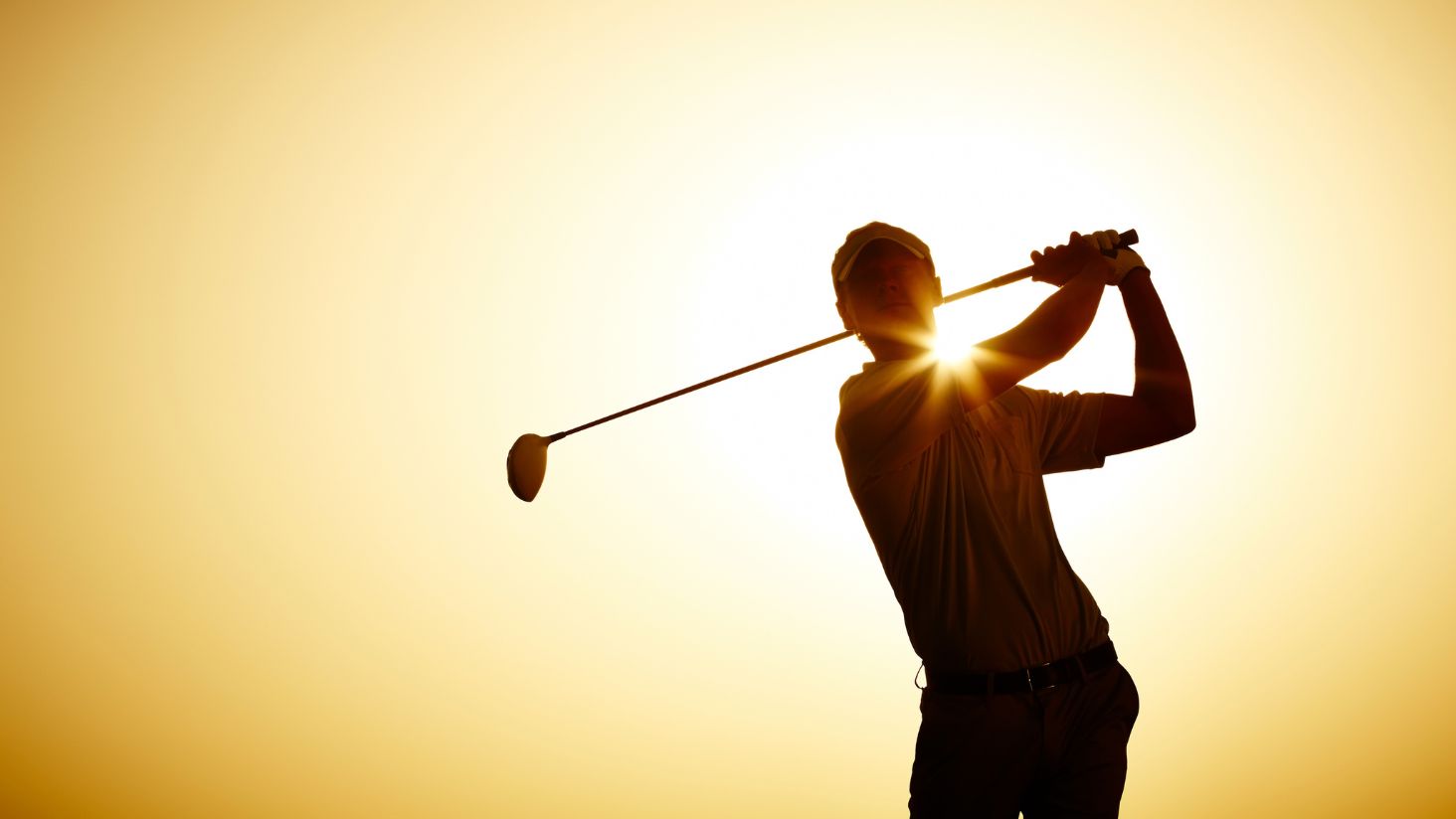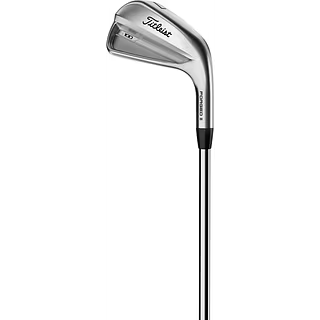


Golf club guide: What do I need to consider when buying a Driver?
In order to perfectly match the shaft and club head of your Driver to you, you should check these seven points before you buy.
The Driver is the club in the golf bag that enables the greatest distances and is therefore decisive for the start of a successful hole. With the plethora of high-tech models on the market, all touting special features for optimized ball speeds, forgiveness and sweet spot technology, choosing the right Driver can seem overwhelming. This buying guide will help you understand the most important aspects and make the right decision for your game.
Choosing the right Driver
1. The nuts and bolts: why a fitting is essential
Forget all the advertising promises and recommendations from your golfing friends for a moment. The most important step when buying a Driver is and remains a professional club fitting. This is the only way to get a club that is perfectly tailored to your individual swing. An experienced fitter will analyze precise key data such as your swing speed, swing path, ball speed, launch angle and spin rate. On this basis, the optimum combination of club head, shaft length, shaft flex and grip is put together for you. A fitting not only takes into account purely technical values, but also which Driver appeals to you visually and acoustically and gives you the necessary confidence on the tee. It is the best investment in consistent performance and more fun on the course.
Request an appointment for your Driver fitting here.
2. Club head size and forgiveness: finding the golden mean
The volume of the Driver head is given in cubic centimetres (ccm). The upper limit is 460 cc, a size that almost all modern drivers fully utilize. This volume offers the highest possible fault tolerance, also known as high moment of inertia (MOI). This means that even if the ball is not perfectly centered, the club head remains more stable and the ball maintains an acceptable direction and length. For the majority of golfers, a 460cc head is the optimal choice as it offers maximum support and confidence.
Some more compact models or "Mini-Drivers" are slightly smaller. They are aimed at very experienced players who want more precise ball control and want to shape shots in a targeted manner. However, these clubs are significantly less forgiving. The specific shape of the club head can also influence the weight distribution and therefore the forgiveness and ball flight.
3. High-tech materials: light, strong, optimized
The evolution of Driver materials has made enormous progress since the days of Persimmon wood heads. Today, almost all drivers are made from titanium or an advanced combination of lightweight composites.
Titanium is the preferred material in Driver construction as it offers an exceptional combination of strength, durability and light weight. These properties enable the production of large club heads without increasing the overall weight excessively. The result: players can achieve higher swing speeds, which leads to more distance, and benefit from a larger sweet spot for greater accuracy.
Many modern high-performance drivers integrate other materials in addition to titanium: carbon is used in the crown (top) or rear of the head to save weight. The weight saved can be strategically redistributed to ideally position the center of gravity and maximize ball speed. Tungsten is used as a denser material to increase the weight at the edges of the club head to further increase the moment of inertia (MOI). This further improves the stability and forgiveness of the Driver.
4. Loft and ideal launch angle: sometimes more really is more
The loft (the angle of inclination of the club face) is a decisive parameter for the flight curve of the ball. It determines how steep or flat the ball leaves the club face. Typical Driver lofts are between 8 and 12 degrees. Contrary to the widespread assumption that a lower loft automatically means more distance, the opposite is often the case.
For most golfers, especially ladies, seniors and players with more moderate swing speeds, a higher loft (for example 12 degrees and above) leads to an optimal balance of high launch angle and sufficient backspin. This spin generates the necessary lift to keep the ball in the air for a long time and achieve maximum distances. A higher loft can therefore lead to longer shots.
Players with very high swing speeds (over 140 km/h) naturally generate a lot of ball speed and spin. For them, a lower loft (below 10 degrees) can be advantageous to control spin and achieve a penetrating ball flight. The following table provides guidance on the appropriate loft based on your swing speed:
| Swing Speed (MPH) | Recommended Driver Loft (Degrees) |
|---|---|
| >105 | 8.5 |
| 97-104 | 9 |
| 84-96 | 10.5 |
| 72-83 | 12 |
| <72 | 14 |
5. The shaft: the connection between you and the ball
The shaft is the backbone of the Driver and has a decisive influence on feel, ball flight and your control over the club. After the club head, choosing the right shaft is of the utmost importance. The flex must match your swing speed. A shaft that is too stiff prevents efficient energy transfer and can lead to a flat, faulty ball flight. A shaft that is too soft can cause the ball flight to be uncontrollably high and with too much spin.
Ladies (L) / Senior (A) / Light: For moderate to slower swing speeds. Tends to promote a higher ball flight with a slight tendency to the left (for right-handers).
Regular (R): The standard flex for average swing speeds.
Stiff (S) / Extra Stiff (XS): For higher swing speeds. Supports a lower, penetrating trajectory with a tendency to the right (for right-handers).
Shaft length: The maximum permissible length of a Driver is 48 inches. However, most models are shorter, typically between 43 and 46 inches, with 45 inches being the common standard. While a longer shaft can potentially allow for higher swing speeds and therefore more distance, it often comes at the expense of control and precision. For most golfers, a 45-inch shaft offers a good balance of distance and controllability. First, of course, the length of the shaft must match your height.

6. Modern adjustment options: Your Driver, your rules
Many current Driver models offer extensive customization options to tailor the club to your individual preferences, swing and conditions.
Adjustable loft: Most drivers allow you to easily adjust the loft by up to 4 or 5 degrees using a special wrench. Note that changing the loft often also affects the face angle (the alignment of the club face to the target), which can correct the horizontal ball flight.
Adjusting the club head (face angle): On some models, you can adjust the angle of the club face to the target separately. A slightly "closed" face angle (club face points slightly inwards) can help to minimize a Slice (ball flight to the right). Conversely, a slightly "open" face angle (club face points slightly outwards) can help to minimize a Hook (ball flight to the left).
Movable weights: Many drivers are equipped with adjustable weights (often between 1 and 20 grams) on the sole of the club head. By repositioning them, you can change the center of gravity and thus influence the ball flight:
Weight towards the heel or back: Promotes a Draw (ball flight from right to left for right-handed players) and a higher ball launch.
Weight to the toe or front: Promotes a Fade (ball flight from left to right for right-handers).

7. Performance indicators: Understanding COR and smash factor
Even if these values are mainly relevant for a fitting, it is helpful to know what they mean:
COR (Coefficient of Restitution): This value measures how efficiently energy is transferred from the club head to the ball. The rules limit the COR value to 0.83, which means that a maximum of 83% of the energy of the club head may be transferred to the golf ball.
Smash factor: This quantifies the efficiency of the hit and the energy transferred. It is calculated by dividing the ball speed by the club head speed. An ideal smash factor is 1.50. This means, for example, that with a club head speed of 160 km/h, a ball speed of 240 km/h is achieved.
Conclusion: Your Driver, your success
The choice of Driver is an investment in your golf game. Instead of being overwhelmed by the huge choice, focus on the key factors: the right head size for maximum forgiveness, modern materials for Performance, the optimum loft for your swing speed and the right shaft. Take advantage of the wide range of adjustment options offered by modern drivers to perfectly match the club to you.
Always remember: the best Driver is not necessarily the latest or most expensive model, but the club that best suits your individual swing and your goals. And the most reliable way to find this out is through a professional fitting.
(AI tools were used to create this article)



Release date
16 Jul 2025
photos
The Driver is one of the most important golf clubs in your golf bag. This guide will help you make the right choice. (Photo: Adobe Stock)



